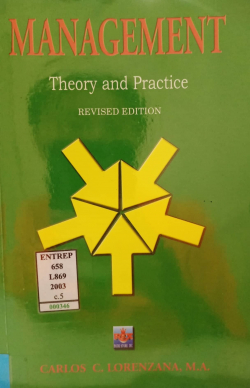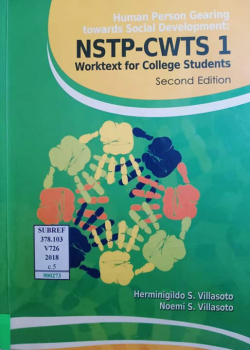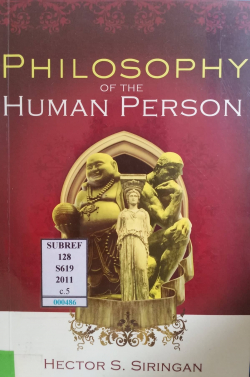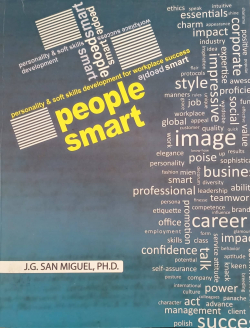Theories of personality
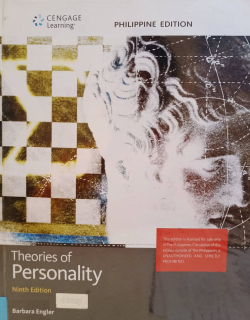
Buy online ($)
Type
Book
Authors
Engler ( Engler, Barbara )
ISBN 13
9789814732024
Category
ENTREP
[ Browse Items ]
Publication Year
2016
Publisher
Cengage Learning Asia Pte Ltd, Philippines
Pages
504 pages
Subject
Differential & developmental psychology
Tags
Abstract
Like its predecessors, the Ninth Edition of Personality Theories: An Introduction provides
accurate and thorough coverage of personality theories in an easily accessible text
enhanced by pedagogical features intended to stimulate critical thinking. In this edition,as in earlier ones, the author have worked to achieve these four objectives:
1. To present a clear and concise picture of the major features of each theory. The author have strived to present the material in an approachable style and, wherever possible, to illustrate theoretical points with concrete examples. The author have presented each theory succinctly, to allow for adequate coverage of all the theories. Each chapter focuses on one theory or group of related theories. Brief biographies of the major theorists shed light on how they formed their theories.
2. To focus on significant ideas and themes that structure the content of the theories.The author regularly compare theories to outline the distinctive characteristics and contributions of each theory and to emphasize significant ideas around which the theories are structured. Because many theories have elaborated on, modified, or refuted psychoanalysis, the author have devoted substantial space to Freudian theory, providing the reader with a focal point from which comparisons and contrasts may be made.
3. To provide criteria to guide the evaluation of each theory. Many of the theories that influence contemporary thought did not develop from strict scientific methods but instead reflect philosophical assumptions. In addition, the application of a theory to a real-life situation such as psychotherapy is a creative act, demonstrating that a personality theory may function as an art. Therefore, the evaluation of a personality theory is best accomplished when the theory is examined from the viewpoints of philosophy, science, and art and judged according to criteria appropriate to each one. Within each chapter, two features-“Philosophy, Science, and Art” sections and “Philosophical Assumptions” boxes-refer students back to the basic philosophical assumptions introduced in Chapter 1, relating parts back to whole and drawing attention to significant ideas that have generated the structure and content of personality theories. The “Conclusion” at the end of the text wraps up the evaluation discussion.
4. To present activities, informed by the tenets of each theory, that will stimulate critical thinking. Effective learning is not a passive process; it requires active participation. The fourth objective is accomplished through “Thinking Critically” boxes, which provide activities that foster critical thinking. This feature, introduced in the Third Edition, has proven to be very popular. Activities have been carefully reviewed and revised to provide students with a clearer context for the activity. The “Personal Experiences” feature, created by Thomas Finn of Bentley College, at the end of each chapter introduced in the Eighth Edition, it consists of questions and activities designed to engage students more directly with the theories and to bridge the gap between the theories and students’ lives.
accurate and thorough coverage of personality theories in an easily accessible text
enhanced by pedagogical features intended to stimulate critical thinking. In this edition,as in earlier ones, the author have worked to achieve these four objectives:
1. To present a clear and concise picture of the major features of each theory. The author have strived to present the material in an approachable style and, wherever possible, to illustrate theoretical points with concrete examples. The author have presented each theory succinctly, to allow for adequate coverage of all the theories. Each chapter focuses on one theory or group of related theories. Brief biographies of the major theorists shed light on how they formed their theories.
2. To focus on significant ideas and themes that structure the content of the theories.The author regularly compare theories to outline the distinctive characteristics and contributions of each theory and to emphasize significant ideas around which the theories are structured. Because many theories have elaborated on, modified, or refuted psychoanalysis, the author have devoted substantial space to Freudian theory, providing the reader with a focal point from which comparisons and contrasts may be made.
3. To provide criteria to guide the evaluation of each theory. Many of the theories that influence contemporary thought did not develop from strict scientific methods but instead reflect philosophical assumptions. In addition, the application of a theory to a real-life situation such as psychotherapy is a creative act, demonstrating that a personality theory may function as an art. Therefore, the evaluation of a personality theory is best accomplished when the theory is examined from the viewpoints of philosophy, science, and art and judged according to criteria appropriate to each one. Within each chapter, two features-“Philosophy, Science, and Art” sections and “Philosophical Assumptions” boxes-refer students back to the basic philosophical assumptions introduced in Chapter 1, relating parts back to whole and drawing attention to significant ideas that have generated the structure and content of personality theories. The “Conclusion” at the end of the text wraps up the evaluation discussion.
4. To present activities, informed by the tenets of each theory, that will stimulate critical thinking. Effective learning is not a passive process; it requires active participation. The fourth objective is accomplished through “Thinking Critically” boxes, which provide activities that foster critical thinking. This feature, introduced in the Third Edition, has proven to be very popular. Activities have been carefully reviewed and revised to provide students with a clearer context for the activity. The “Personal Experiences” feature, created by Thomas Finn of Bentley College, at the end of each chapter introduced in the Eighth Edition, it consists of questions and activities designed to engage students more directly with the theories and to bridge the gap between the theories and students’ lives.
Description
Illustration ; Newsprint ; 260 cm
Includes bibliographic references and index
Includes bibliographic references and index
Number of Copies
5
| Library | Accession No | Call No | Copy No | Edition | Location | Availability |
|---|---|---|---|---|---|---|
| Main | 289 |
ENTREP 155.2 E582 2016 |
1 | ENTREPRENEURSHIP REFERENCE | Yes | |
| Main | 290 |
ENTREP 155.2 E582 2016 |
2 | ENTREPRENEURSHIP REFERENCE | Yes | |
| Main | 291 |
ENTREP 155.2 E582 2016 |
3 | ENTREPRENEURSHIP REFERENCE | Yes | |
| Main | 292 |
ENTREP 155.2 E582 2016 |
4 | ENTREPRENEURSHIP REFERENCE | Yes | |
| Main | 293 |
ENTREP 155.2 E582 2016 |
5 | ENTREPRENEURSHIP REFERENCE | Yes |

